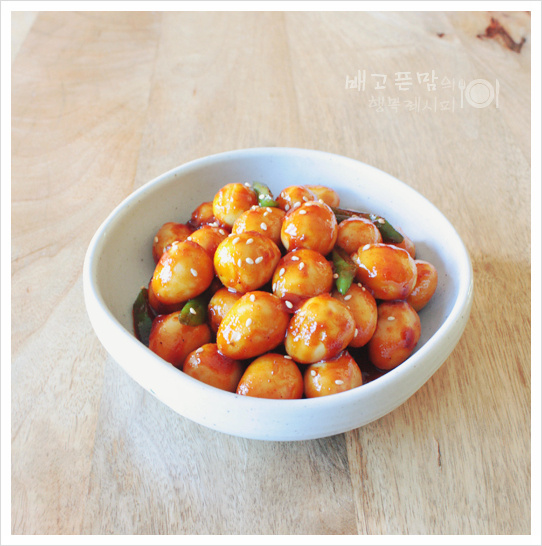
Making Quail Eggs with Chewy Texture Making Quail Eggs Boil Quai
Should I buy peeled quail eggs at the mart? Should I boil it at home? After thinking for a while, I bought two plates of quail eggs with 28 eggs instead of 30, boiled them, cooled them enough in cold water, and shook them in an airtight container to peel them. It is economically cheaper to buy peeled quail eggs when the quail eggs are auxiliary ingredients, and to boil them when the main ingredient is pan quail eggs.
4 serving
Within 30 minutes
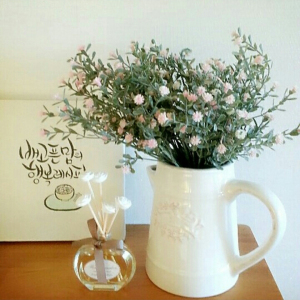
배고픈엄마
- Ingredients
-
-
quail eggs2pack
-
Vinegar
-
leek1ea
-
Cooking oil1TS
-
Sesame oil1TS
-
Soy sauce3TS
-
Cheongju2TS
-
red pepper paste1TS
-
anchovy broth1cup
-
Sugar1TS
-
plum extract1TS
-
ground pepperlittle
-
Cheongyang red pepper3ea
-
- Cooking Steps
-
STEP 1/12Place 2 plates of quail eggs in a pot and pour water to cover the quail eggs. And pour vinegar in a little by little.
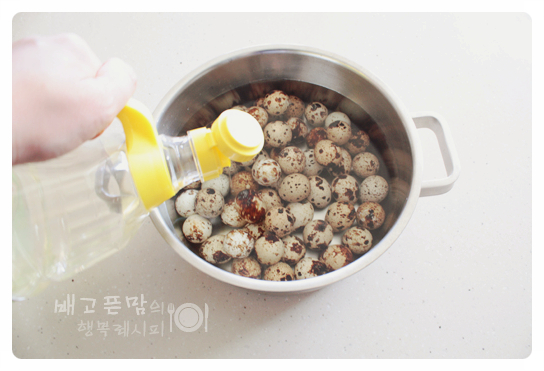 STEP 2/12And boil it over a gas fire. Boil water evenly over high heat and simmer for another 5-10 minutes.
STEP 2/12And boil it over a gas fire. Boil water evenly over high heat and simmer for another 5-10 minutes.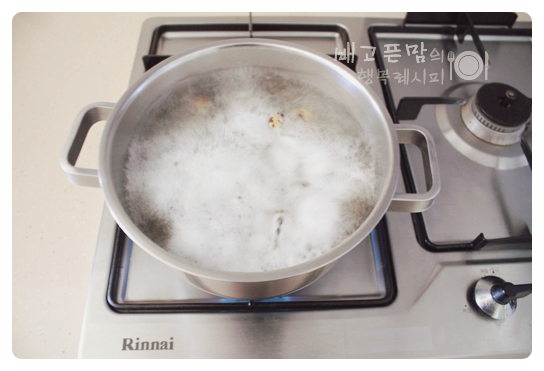 STEP 3/12And the boiled quail eggs cool enough in cold water
STEP 3/12And the boiled quail eggs cool enough in cold water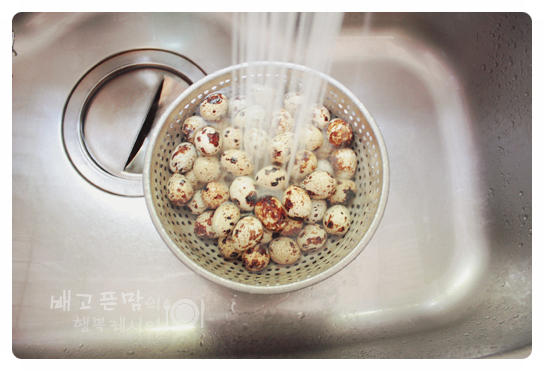 STEP 4/12Put boiled quail eggs in an airtight container as they are wet. Then, close the lid of the sealed container and shake it. If you shake it too hard, quail eggs may pop.
STEP 4/12Put boiled quail eggs in an airtight container as they are wet. Then, close the lid of the sealed container and shake it. If you shake it too hard, quail eggs may pop.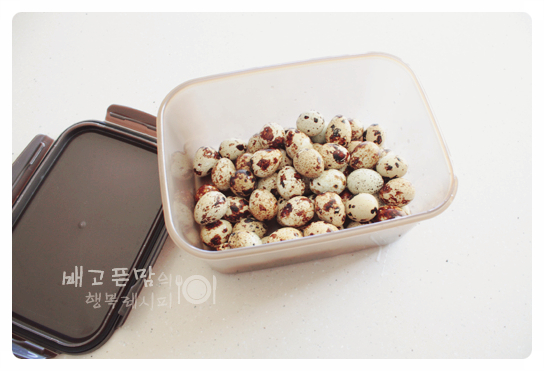 STEP 5/12The hard quail egg shell was broken into small pieces and softened. Then it comes off easily.
STEP 5/12The hard quail egg shell was broken into small pieces and softened. Then it comes off easily.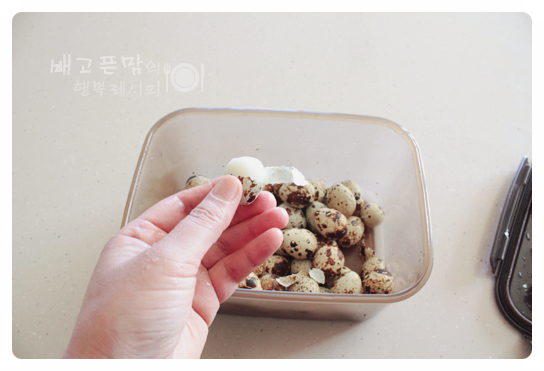 STEP 6/12The peeled quail eggs had skin on them, so I washed them under running water.
STEP 6/12The peeled quail eggs had skin on them, so I washed them under running water.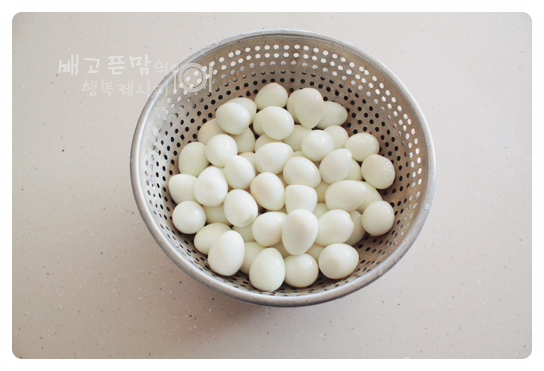 STEP 7/12Put 1 tablespoon of cooking oil and 1 tablespoon of sesame oil in a heated pan, cut 1 green onion, and stir-fry it.
STEP 7/12Put 1 tablespoon of cooking oil and 1 tablespoon of sesame oil in a heated pan, cut 1 green onion, and stir-fry it.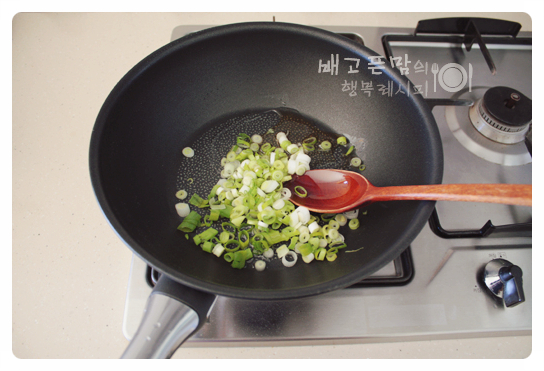
 STEP 8/12Add 40 quail eggs prepared from peeling and stir-fry them since they are golden brown. Then, it becomes a quail egg jangjorim with soy sauce. If you want soft soy sauce, please skip this process.
STEP 8/12Add 40 quail eggs prepared from peeling and stir-fry them since they are golden brown. Then, it becomes a quail egg jangjorim with soy sauce. If you want soft soy sauce, please skip this process.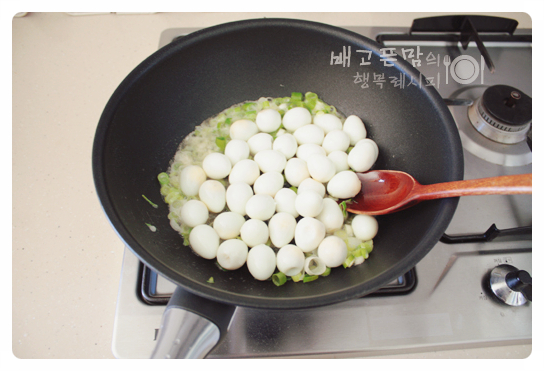
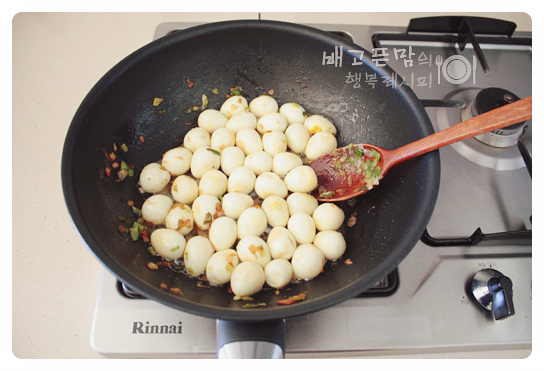 STEP 9/12Add 1 tablespoon of red pepper paste, 3 tablespoon of soy sauce, 2 tablespoon of refined rice wine, 1 cup of kelp anchovy broth, 1 tablespoon of sugar, 1 tablespoon of plum syrup, and a little pepper and stir evenly.
STEP 9/12Add 1 tablespoon of red pepper paste, 3 tablespoon of soy sauce, 2 tablespoon of refined rice wine, 1 cup of kelp anchovy broth, 1 tablespoon of sugar, 1 tablespoon of plum syrup, and a little pepper and stir evenly.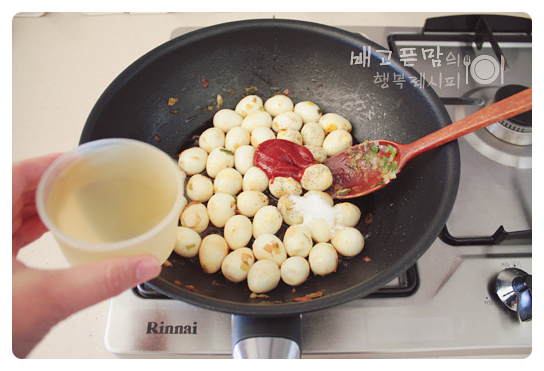
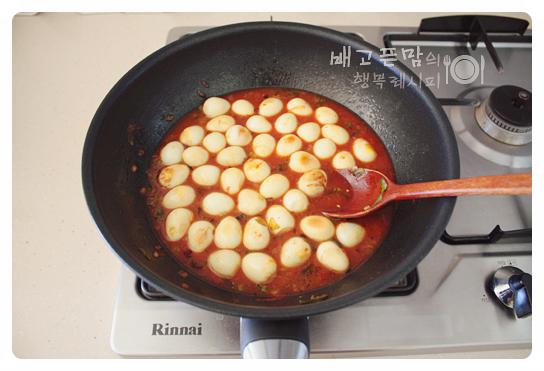 STEP 10/12When the seasoning boils evenly over high heat, reduce it to medium to low heat and boil it down while stirring.
STEP 10/12When the seasoning boils evenly over high heat, reduce it to medium to low heat and boil it down while stirring.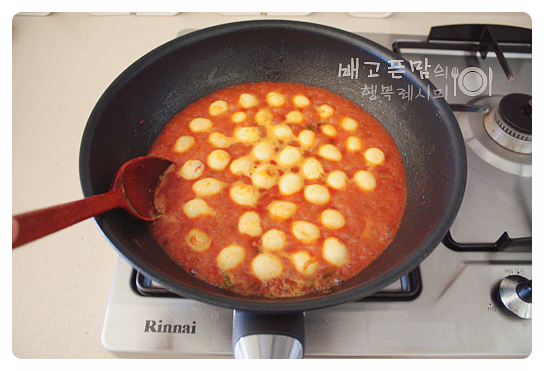 STEP 11/12When the seasoning is almost reduced, cut 3 cheongyang peppers diagonally and boil them down.
STEP 11/12When the seasoning is almost reduced, cut 3 cheongyang peppers diagonally and boil them down. STEP 12/12Boil it down so that the seasoning doesn't burn.
STEP 12/12Boil it down so that the seasoning doesn't burn.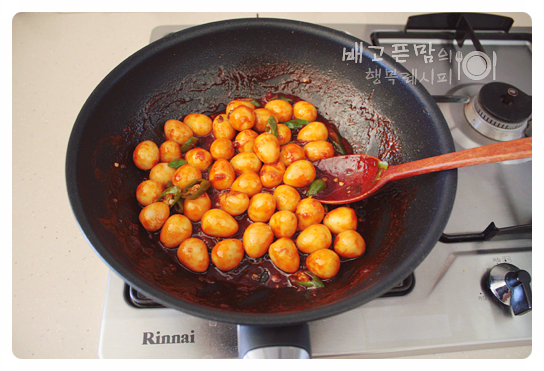 If you put cold water in a bowl of boiled quail eggs, the water quickly warms up. Then you have to change it to cold water. You have to cool the boiled quail eggs while changing them with cold water to peel them easily.
If you put cold water in a bowl of boiled quail eggs, the water quickly warms up. Then you have to change it to cold water. You have to cool the boiled quail eggs while changing them with cold water to peel them easily.
- chicken Recommended recipe
-
-
1
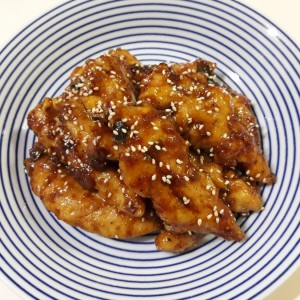 Making soy sauce chicken Kyochon slap sauce :)4.81(63)
Making soy sauce chicken Kyochon slap sauce :)4.81(63) -
2
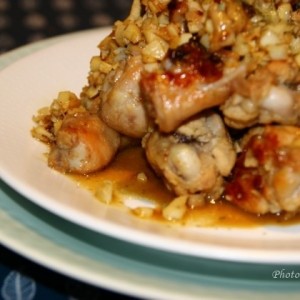 Garlic chicken, it's a charming taste5.00(54)
Garlic chicken, it's a charming taste5.00(54) -
3
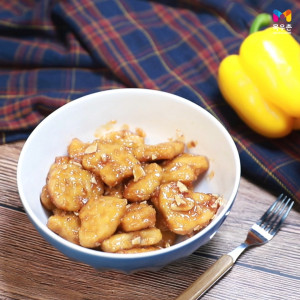 Sweet and salty, sweet and salty chicken! Making Mokwoochon Chic5.00(10)
Sweet and salty, sweet and salty chicken! Making Mokwoochon Chic5.00(10) -
4
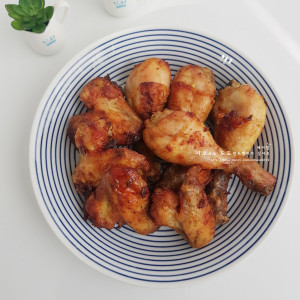 Air fryer chicken4.83(35)
Air fryer chicken4.83(35)
-
- Kimchi Recommended recipe
-
-
1
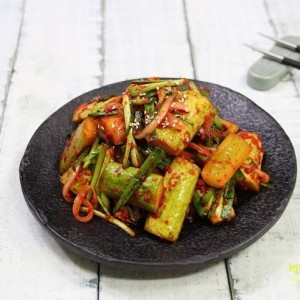 It's nice because it's simple Simple cucumber kimchi4.91(125)
It's nice because it's simple Simple cucumber kimchi4.91(125) -
2
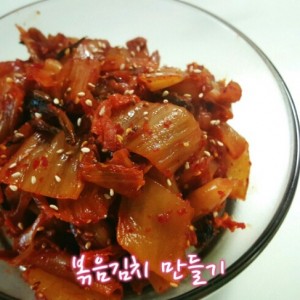 Making fried kimchi with side dishes! It's simple, but it's tota4.87(53)
Making fried kimchi with side dishes! It's simple, but it's tota4.87(53) -
3
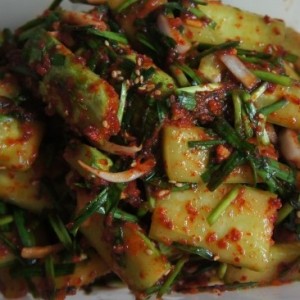 Simple cucumber kimchi4.92(75)
Simple cucumber kimchi4.92(75) -
4
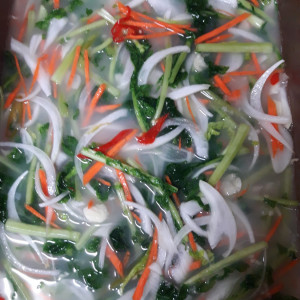 Yeolmu Mul Kimchi (very simple ^^)4.93(55)
Yeolmu Mul Kimchi (very simple ^^)4.93(55)
-